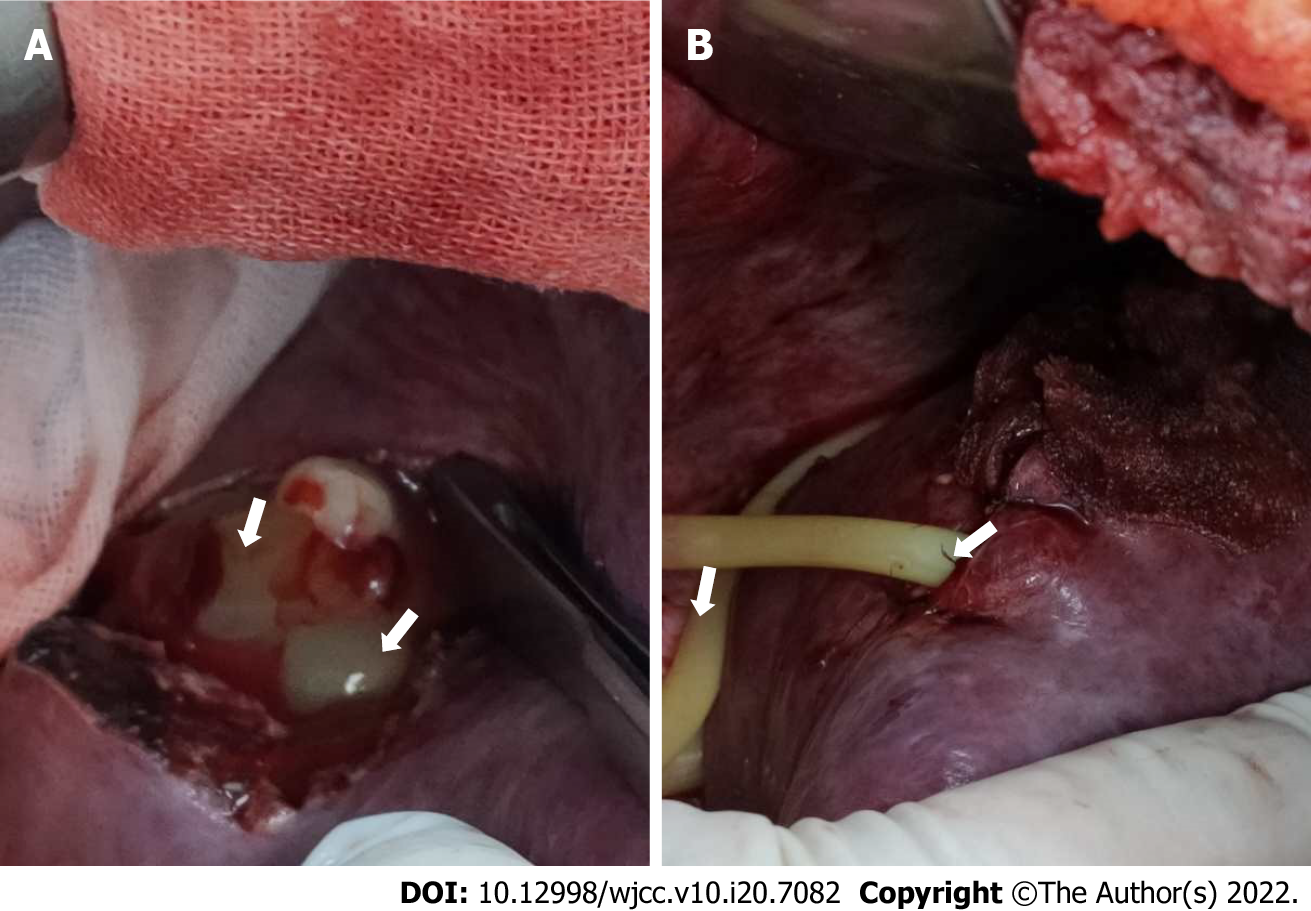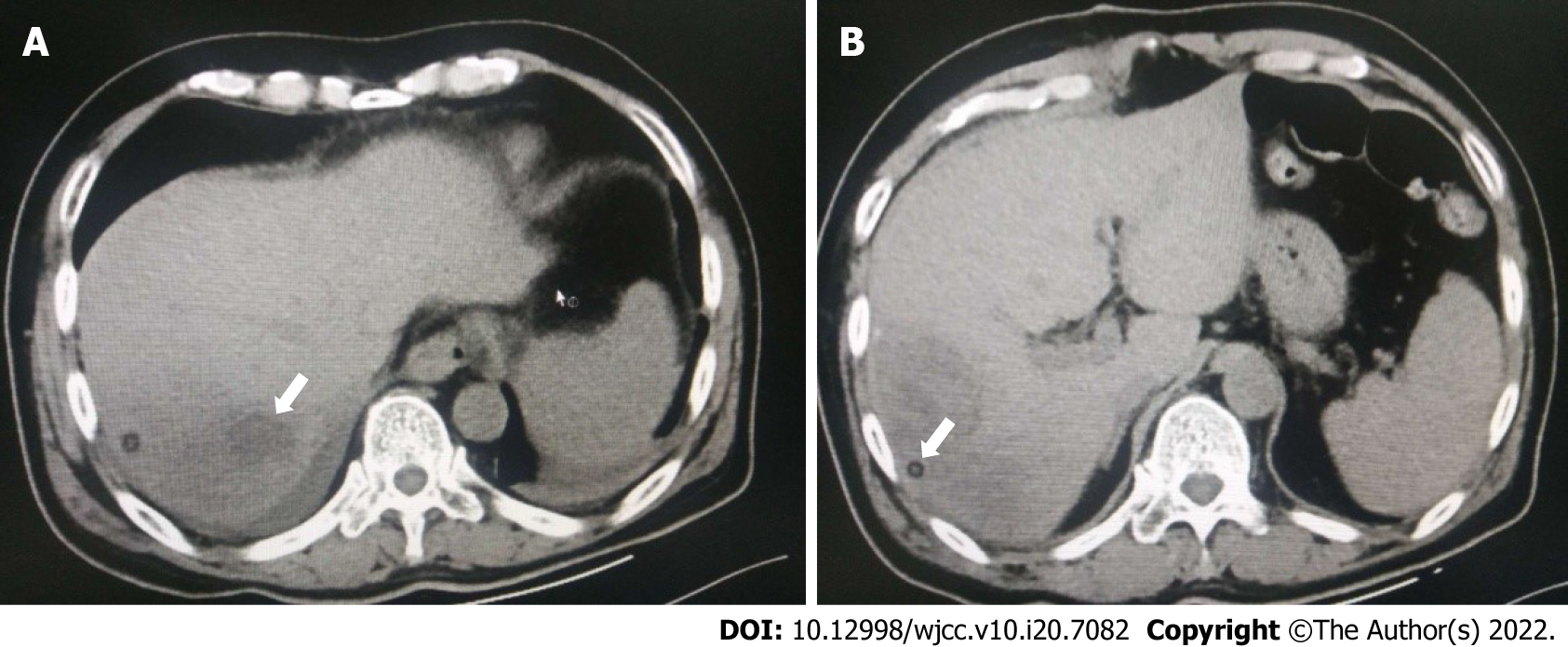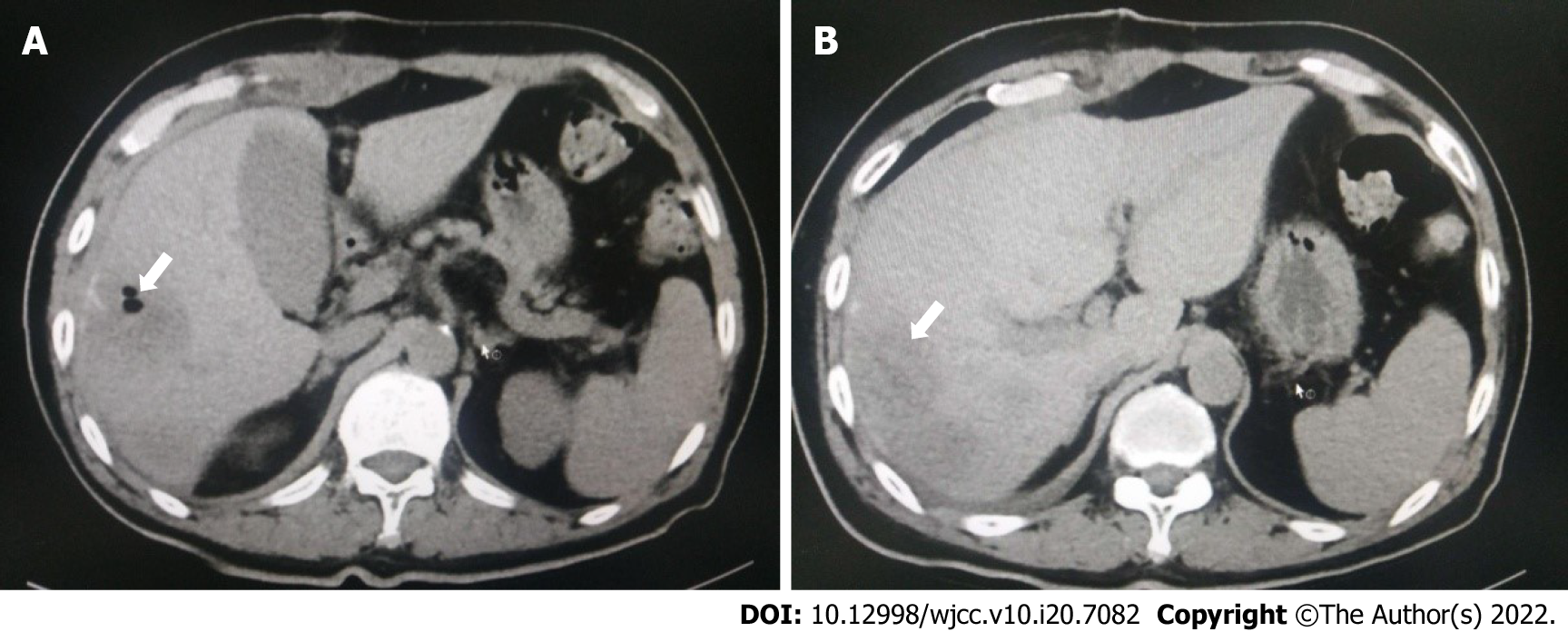Copyright
©The Author(s) 2022.
World J Clin Cases. Jul 16, 2022; 10(20): 7082-7089
Published online Jul 16, 2022. doi: 10.12998/wjcc.v10.i20.7082
Published online Jul 16, 2022. doi: 10.12998/wjcc.v10.i20.7082
Figure 1 Computed tomography of the upper abdomen before surgery.
Images show multiple low-attenuation masses with vague boundaries in the right lobe of the liver. A lesion measuring 9 cm × 8 cm is located in the upper posterior segment of the right lobe. A: The abscess is completely liquefied (white arrow); B: There seems to be septa inside the abscess (white arrow).
Figure 2 Intraoperative findings.
A: Filling of the abscess cavity with platelet-rich plasma (PRP) (white arrows); B: After filling with PRP, the abscess surface was covered with hemostatic gauze, and an abdominal drainage tube was placed (white arrows).
Figure 3 Liver abscess with reactive proliferation of liver cells (H&E staining, 100 ×).
Figure 4 Radiographs taken 3 d after the procedure.
A: The intrahepatic low-attenuation lesion was filled with platelet-rich plasma (white arrow); B: The drainage tube (white arrow) was visible in the abscess cavity.
Figure 5 Radiographs taken 7 d after the procedure.
A: A hole in the abscess cavity was noted, representing the space where the drainage tube was placed (white arrow); B: The low-attenuation lesion was significantly smaller (white arrow).
- Citation: Wang JH, Gao ZH, Qian HL, Li JS, Ji HM, Da MX. Treatment of pyogenic liver abscess by surgical incision and drainage combined with platelet-rich plasma: A case report. World J Clin Cases 2022; 10(20): 7082-7089
- URL: https://www.wjgnet.com/2307-8960/full/v10/i20/7082.htm
- DOI: https://dx.doi.org/10.12998/wjcc.v10.i20.7082













